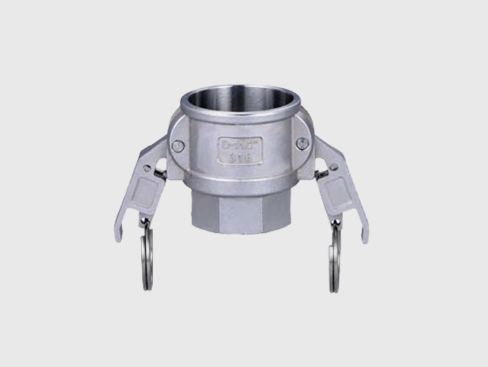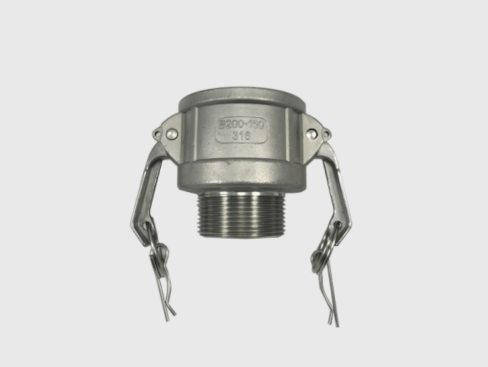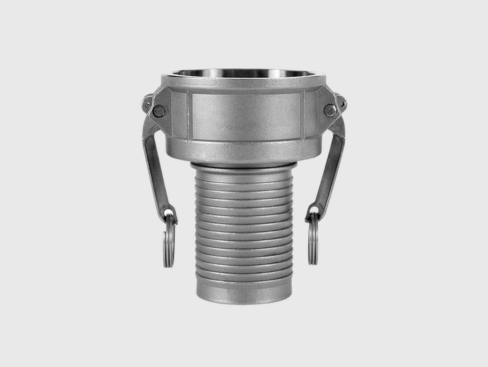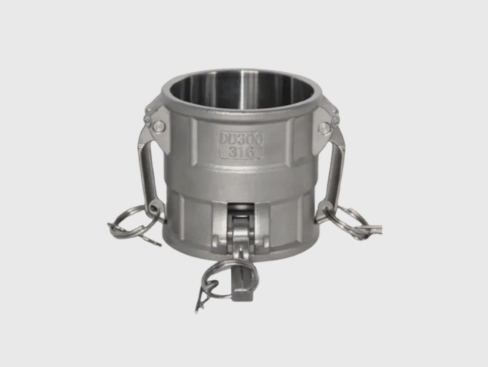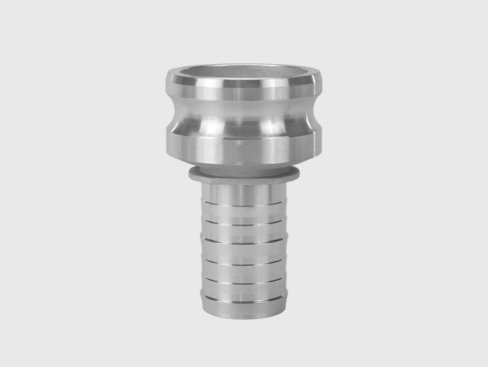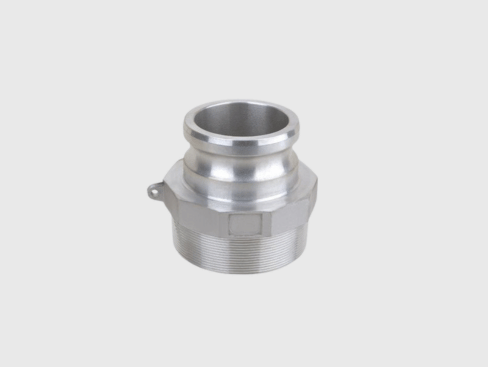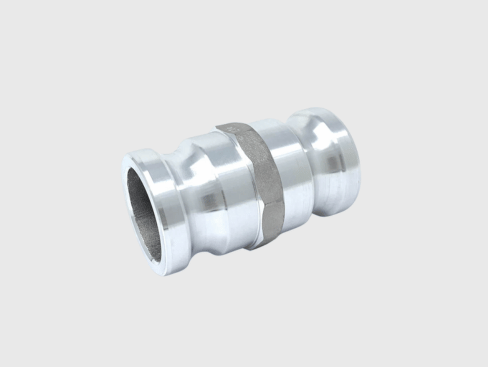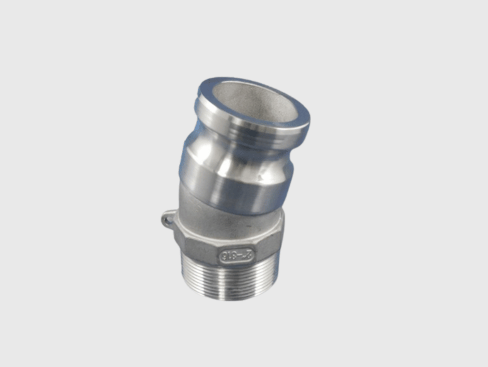Product details
CAMLOCK COUPLINGS
We supply ranges of Camlock Couplings made from Stainless Steel, Aluminum, Brass, Polypropylene and Nylon: Type A, Type B, Type C, Type D, Type DC, Type DP, Type E, Type F, etc. Also, we supply Sealing Rings for Camlock Couplings in the materials: NBR, EPDM, Viton, and PTFE, and other Camlock Accessories.
MATERIALS AND APPLICATIONS
The following table illustrates the characteristics of each material and how we can use it for various applications.
| MATERIAL | CHARACTERISTIC | APPLICATION | Working Pressure (PSI) | ||||||
| 1/2" | 3/4"-2" | 2.1/2" | 3" | 4" | 5"-6" | 8"-12" | |||
| Stainless Steel |
Corrosion-resistant Compatible with various media Long-term durability |
Acids, alkalis, and highly corrosive areas Temperature range: -150 °F to +500 °F |
150 | 250 | 225 | 200 | 100 | 75 | < 100 |
| Aluminum Alloy |
Low density, high intensity Good plasticity Electrical and thermal conductivity |
Freshwater mixtures Temperature range: -150 °F to + 250 °F |
150 | 250 | 150 | 125 | 100 | 75 | ≤ 50 |
| Brass | Electrical conductivity Seawater resistant |
Salty water and any media except for acid and alkali Marine applications Deep well operations Temperature range: -150 °F to + 450 °F |
250 | 250 | 250 | 125 | 100 | 75 | ≤ 50 |
| PP | Low density Chemically stable Anti-aging |
Acidic and alkaline environments Transmission of liquids in the chemical industry Agricultural irrigation applications Temperature range: -15 °F to + 200 °F |
75 | 100 | - | 50 | 50 | - | - |
| Nylon | Good heat resistance Higher density than PP Resistant to changing humidity |
- | 100 | - | 50 | 50 | - | - | |

Contact us
Request more info
Our team is ready to assist you with the right solutions at the right value — whether you’re sourcing for large-scale industrial projects or looking for specific components. Let us be your trusted partner in every step of your supply journey.
Office support
470 North Bridge Road, #05-12,
Bugis Cube, Singapore (188735).
Bugis Cube, Singapore (188735).
Factory
1887# Tianzhong Road, High-New Industrial Park,
Wenzhou, China.
Wenzhou, China.
Call Us
Email us
Write a message



